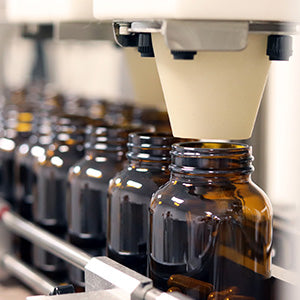55 Foods with Manganese: Essential for Enzyme Support

Manganese is a nutrient that is critical for the production of several different enzymes. Your body uses many of these enzymes to support antioxidant activity,[1] nutrient absorption,[2] bone development,[3] metabolism,[4] and the healing of wounds.[5] Like any other mineral, manganese works best when it’s obtained from natural, whole-food sources. Foods that are rich in manganese include nuts, seeds, grains, vegetables, legumes, herbs, and spices.
Let's start by examining how much manganese your body requires and then we'll look at the best raw foods with manganese to add to your diet.
Daily Manganese Requirements
While there is no question about the necessity of manganese for vital enzymes, there is no official Estimated Average Requirement (EAR) for manganese. However, the National Institute of Health has set an Adequate Intake (AI) level of 2.3 mg per day for adult men and 1.8 mg per day for adult women. The recommended amount for children is slightly less and varies with age — see the chart below for more details.[6]
| Manganese Adequate Intake Levels for Boys and Girls Ages 1-8 | Required Daily Allowance (RDA) |
|---|---|
| 1-3 years | 1.2 mg/day |
| 4-8 years | 1.5 mg/day |
| Manganese Adequate Intake Levels for Boys Ages 9-18 | |
| 9-13 years | 1.9 mg/day |
| 14-18 years | 2.2 mg/day |
| Manganese Adequate Intake Levels for Girls Ages 9-18 | |
| 9-13 years | 1.6 mg/day |
| 14-18 years | 1.6 mg/day |
Finding the Right Balance of Manganese
While manganese is beneficial, too much of a good thing can be harmful. The Tolerable Upper Intake Level (UL) for adults is 11 mg per day. Going beyond this level consistently can cause manganese toxicity, a condition that causes enzyme disruption, headaches, insomnia, memory loss, emotional instability, hyper-myotonia, and hand tremors.[7]
Manganese can also affect the body’s ability to use and absorb other vital nutrients. Zinc and manganese, for example, have a close relationship. Zinc toxicity can often occur as a result of a manganese deficiency.[8]
Exact manganese requirements will vary slightly from one individual to the next; good health is really about finding a healthy balance. Before making significant changes to your diet or starting any supplement, check with your trusted health care professional first. They can test your manganese levels and recommend a serving size to best fit your health goals.
Best Raw Food Sources of Manganese
And now, here are our favorite 55 vegan foods with manganese that are delicious, nutritious, and easy to find.
Nuts and Seeds
| Source | Serving Size | Amount of Manganese/Serving |
|---|---|---|
| Hazelnuts | 1 cup | 7.1 mg |
| Pine Nuts | 1 cup | 11.9 mg |
| Butternuts | 1 cup | 7.9 mg |
| Hemp Seeds | 1 oz | 2.8 mg |
| Pumpkin Seeds | 1 cup | 4.2 mg |
| Macadamia Nuts | 1 cup | 4.1 mg |
| Pecans | 1 cup | 4.9 mg |
| Walnuts | 1 cup | 4.9 mg |
| Sesame Seeds | 1 cup | 3.5 mg |
| Flax Seeds | 1 cup | 4.2 mg |
| Sunflower Seeds | 1 cup | 0.9 mg |
| Chia Seeds | 1 oz | 0.6 mg |
| Almonds | 1 cup | 3.6 mg |
| Peanuts | 1 cup | 2.7 mg |
Grains
| Source | Serving Size | Amount of Manganese/Serving |
|---|---|---|
| Teff | 1 cup | 17.8 mg |
| Oats | 1 cup | 7.7 mg |
| Wheat | 1 cup | 4.6 mg |
| Brown Rice | 1 cup | 6.9 mg |
| Amaranth | 1 cup | 6.4 mg |
| Spelt | 1 cup | 5.2 mg |
| Rye | 1 cup | 4.5 mg |
| Quinoa | 1 cup | 3.5 mg |
Vegetables and Legumes
| Source | Serving Size | Amount of Manganese/Serving |
|---|---|---|
| Garbanzo Beans | 1 cup | 4.4 mg |
| Leeks | 1 cup | 0.4 mg |
| Spinach | 1 cup | 0.3 mg |
| Kale | 1 cup | 0.5 mg |
| Turnip Greens | 1 cup | 0.3 mg |
| Chard | 1 cup | 0.1 mg |
| Mustard Greens | 1 cup | 0.3 mg |
| Broccoli | 1 cup | 0.3 mg |
Herbs and Spices
| Source | Serving Size | Amount of Manganese/Serving |
|---|---|---|
| Clove | 1 oz | 8.4 mg |
| Ginger | 1 oz | 0.06 mg |
| Saffron | 1 oz | 8.0 mg |
| Cardamom | 1 oz | 7.94 mg |
| Turmeric | 1 oz | 2.04 mg |
| Cinnamon | 1 oz | 5.46 mg |
| Spearmint | 1 oz | 0.3 mg |
| Parsley | 1 cup | 0.1 mg |
| Basil | 1 oz | 0.3 mg |
| Curry | 1 oz | 1.2 mg |
| Bay Leaf | 1 oz | 2.3 mg |
| Tarragon | 1 oz | 0.5 mg |
| Thyme | 1 oz | 0.5 mg |
| Poppy Seed | 1 oz | 7.1 mg |
| Fennel Seed | 1 oz | 1.8 mg |
| Coriander | 1 oz | 0.1 mg |
| Marjoram | 1 oz | 1.5 mg |
| Oregano | 1 oz | 1.3 mg |
| Dill Weed | 1 cup | 0.1 mg |
| Cumin Seed | 1 oz | 0.9 mg |
| Sage | 1 oz | 0.9 mg |
| Epazote | 1 oz | 0.9 mg |
| Allspice | 1 oz | 0.8 mg |
| Nutmeg | 1 oz | 0.9 mg |
| Amaranth Leaves | 1 cup | 0.2 mg |
There are countless others foods to choose from, but these are among the most popular vegan sources of manganese. Try eating any of these on their own or incorporating them into your favorite recipes for a daily manganese boost. Remember to select local or organic, non-GMO food for the best flavor and quality.
Other Sources of Manganese
Manganese can also be found in unexpected places, including your tap water.[10] While small amounts in the public water supply are permissible and often go unnoticed, large quantities of the mineral can darken the appearance of water and give it a bitter, metallic taste. If you want to avoid water with unknown contaminants, stick to purified or distilled water.
Most multivitamin formulas contain manganese; manganese is also available as a standalone supplement. Manganese supplementation may be a good option for people who are unable to meet their daily requirements through diet alone. Global Healing offers one of the most comprehensive daily vitamins with Multivitamin. This all-in-one vitamin and mineral supplement is an excellent source of nutrients. Multivitamin is highly bioavailable, and every ingredient is derived from ultra-dissolved, natural compounds that are organically bound to carbon, giving your body the best chance of absorbing the nutrients — including manganese — that it needs.
References (10)
- Coassin M, Ursini F, Bindoli A. Antioxidant effect of manganese. Arch Biochem Biophys. 1992;299(2):330-3.
- Weinstein LH, Robbins WR. The Effect of Different Iron and Manganese Nutrient Levels on the Catalase and Cytochrome Oxidase Activities of Green and Albino Sunflower Leaf Tissues. Plant Physiology. 1955;30(1):27-32.
- Palacios C. The role of nutrients in bone health, from A to Z. Crit Rev Food Sci Nutr. 2006;46(8):621-8.
- Shukla GS, Chandra SV. Effects of manganese on carbohydrate metabolism and mitochondrial enzymes in rats. Acta Pharmacol Toxicol (Copenh). 1982;51(3):209-16.
- Marrotte EJ, Chen DD, Hakim JS, Chen AF. Manganese superoxide dismutase expression in endothelial progenitor cells accelerates wound healing in diabetic mice. J Clin Invest. 2010;120(12):4207-19.
- Chen Y, Huang Z, Zhou M, Ma Z, Chen J, Tang X. Dietary Reference Intakes for Vitamin A, Vitamin K, Arsenic, Boron, Chromium, Copper, Iodine, Iron, Manganese, Molybdenum, Nickel, Silicon, Vanadium, and Zinc. Environ Sci Technol. 2017.
- Crossgrove J, Zheng W. Manganese toxicity upon overexposure. NMR Biomed. 2004;17(8):544-53.
- Jacobsen FE, Kazmierczak KM, Lisher JP, Winkler ME, Giedroc DP. Interplay between manganese and zinc homeostasis in the human pathogen Streptococcus pneumoniae. Metallomics. 2011;3(1):38-41.
- Secondary Drinking Water Standards: Guidance for Nuisance Chemicals. United States Environmental Protection Agency, n.d. Web. 24 Jan. 2017.
†Results may vary. Information and statements made are for education purposes and are not intended to replace the advice of your doctor. If you have a severe medical condition or health concern, see your physician.

Dr. Edward Group, DC
FOUNDER | HEALER | ADVOCATEDr. Group, DC is a healer and alternative health advocate, and an industry leader and innovator in the field of natural health who is dedicated to helping others. He is a registered doctor of chiropractic (DC), a naturopathic practitioner (NP), and proud alum of Harvard Business School and MIT Sloan School of Management. Dr. Group, DC is the founder of Global Healing – a mission and vision he has shared through best-selling books and frequent media appearances. He aims to spread his message of positivity, hope, and wellness throughout the world.














